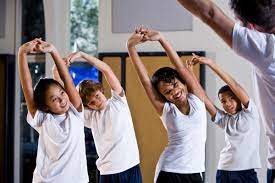
The Covid-19 pandemic has had an unprecedented impact on young children’s health and physical development. For example, following the partial school closures, Ofsted14 reported some children were unable to hold a pencil, when they had previously been able to do this successfully. Similarly, 73 per cent of teachers responding to a national survey in autumn 2020 said they were concerned about the physical development of young children in their school3.
Extended periods of remote learning at home reduced some children’s opportunities to practise fine motor skills like using pencils or scissors, while others have had limited access to outdoor space and lost confidence in skills such as jumping from large-scale equipment14. This makes it more important than ever to understand more about children’s physical development and how to support it.
The International Early Learning and Child Well-being Study (IELS) explored the physical development of over 2,300 five-year-olds in England by asking teachers to rate children’s fine and gross motor skills (their ability to control movements of the small muscles in the hands as well as larger muscles of the body).
Our recent analysis of the 2018 IELS data10 found evidence of positive relationships between children’s physical and cognitive development, and provides insights into the relationships between children’s motor skills and other areas of development (including numeracy and language).
What factors are related to children’s fine and gross motor skills?
Our analysis explored a range of factors that could be related to children’s fine and gross motor skills, including gender, age and deprivation (parental socio-economic status). We found that having parents who were strongly or moderately involved with activities in their child’s school was associated with better fine and gross motor skill development.